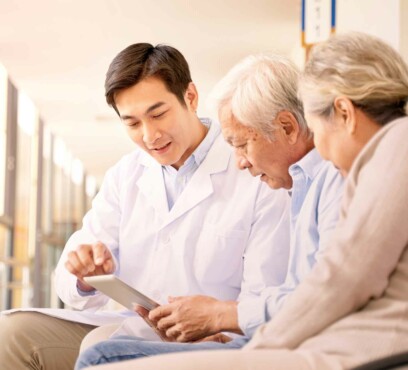Spasticity severity assessment scales

Assessment scales for spasticity
Assessment scales are used to evaluate the severity of spasticity and response to treatment:
- Severity of spasticity: Ashworth Scale, Modified Ashworth Scale and Tardieu Scale
- Disability: Disability Assessment Scale and Functional Ambulation Classification
- Carer Burden Scale
- Goal Attainment Scale
Other scales can be used to quantify the consequences of spasticity on everyday activities:
- Disability Assessment Scale: determines the functional impairment associated with spasticity
- Carer Burden Scale: evaluates the impact of spasticity on physical carer burden
- Functional Ambulation Scale: evaluates the gait dependence

Spasticity scale features
Ashworth Scale
- Assessment of resistance to stretching when a limb is passively moved
- Quantitative determination of muscle tone
- Widely used in spasticity patients
- Rates muscle tone using a 5-point scale (0 to 4)
- Examines independence and ambulation abilities
Modified Ashworth Scale
- A modification of the Ashworth Scale to differentiate mild and moderate spasticity
- Rates muscle tone using a 6-point scale (0 to 5)
Disability Assessment Scale
The Disability Assessment Scale determines functional impairment, limb position and pain, it consists of four functional domain, each rated by the patient on a 3-point scale (0 to 2):
- Hygiene
- Dressing
- Limb position
- Pain
To calculate the overall score, the four domain ratings are added, obtaining a final score ranging between 0 and 12.
Functional Ambulation Classification Scale
This scale examines independence and ambulation abilities. Patients are rated based on their most independent level of function and ability to ambulate.
Assessed by the physician on a 6-point scale:
- Level 0 = No functional ambulation
- Level 1 = Ambulator-dependent for physical assistance, with high dependency
- Level 2 = Ambulator-dependent for physical assistance, with low dependency
- Level 3 = Ambulator-dependent for supervision
- Level 4 = Ambulator-independent (level surfaces only)
- Level 5 = Ambulator-independent
Carer Burden Scale
Measures impact of upper limb spasticity on the physical carer burden.
The Carer Burden Scale consists of four items:
- Cleaning the palm
- Cutting the fingernails
- Cleaning the armpit
- Putting the affected arm through a sleeve
Each item is rated by the carer on a 5-point scale, ranging from 0 (no carer burden) to 4 (maximum carer burden), for the most difficult day over the preceding week.
To calculate the overall score, all the item ratings are added and divided by the number of items answered (sum item rating/number of items answered).
The Goal Attainment Scale
The Goal Attainment Scale (GAS) defines goals that are realistic and measurable.
If you are a patient, you and your healthcare team will identify two personal and realistic goals to measure outcomes of treatment on an ongoing basis.The importance and difficulty for each goal are also defined.
At each subsequent visit, physicians rate the GAS score for each goal using a 5-point scale (-2 to +2):
- -2 = a lot less than expected
- -1 = a little less than expected
- 0 = expected level of achievement
- +1 = a little better than expected
- +2 = a lot better than expected
Which were your goals after returning from rehabilitation clinic?

Setting up for the future
Once spasticity has been diagnosed and the extent of impairment assessed, treatment that involves many experts can be planned.
To optimize the treatment plan, goals that are set by the patient, the caregiver and the physician should be decided on. These goals need to be SMART (Specific, Measurable, Achievable, Relevant, and Time-bound) to ensure that the chosen treatment is appropriate and motivation to “stick with the plan” can be maintained.
GAS is a good tool for measuring the achievement or otherwise of treatment goals and can be used to indicate whether new or amended goals are needed on an ongoing basis.


